Italian Bruschetta
There are a couple of main misconceptions, in the US, regarding bruschetta. The following video addresses them both.
@cheflucacorleone Replying to @🔥🔥✨Haus of Petty✨🔥🔥 Bruschetta is not Pico de Gallo. #bruschetta #cheflucacorleone #ristorantecorleone #reply ♬ original sound – Chef Luca Corleone
The first has to do with the pronunciation of the word. Many Americans pronounce bruschetta with a short U and a soft SH sound, so that it sounds like a small brush–brushetta. As Chef Luca points out in the video above, a longer U sound and a hard CH are more proper for the Italian word–brewsketta. Now there’s an argument to be made for leaving the American pronunciation as is, setting aside pedantry and prescriptivism in favor of making room for language to evolve. I’m all for that, in general. I don’t think that the word is common enough in English to have a set pronunciation yet though. I think there’s room to gently nudge the pronunciation back toward its Italian roots by simply speaking the world we wish to see into being. So since I do not favor the “brushetta” pronunciation, I simply say bruschetta like Chef Luca does without correcting or shaming those sho pronounce it otherwise.
The second misconception of of the dish in general. Many people in the US think bruschetta is this:
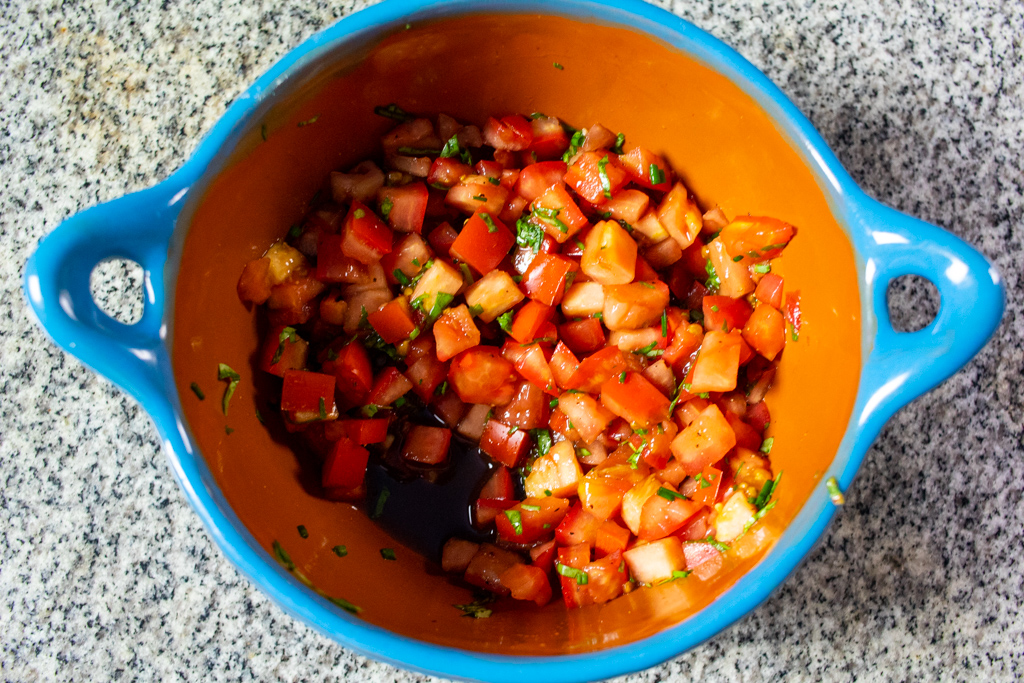
When in reality, this is bruschetta
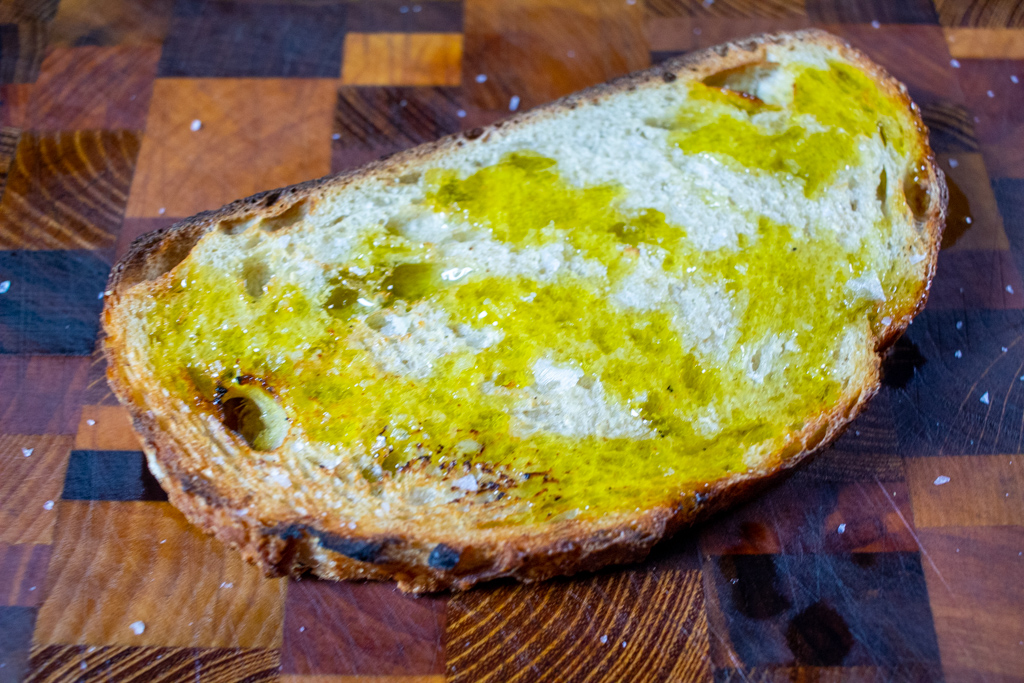
That’s a slice of good, crusty Italian sourdough, toasted on the grill, rubbed gently with a cut clove of garlic, just enough to abrade some of the garlic’s essence onto the bread, and drizzled with good olive oil. Bruschetta is derived from the Italian word bruscare meaning “to toast,” itself derived from a Latin word, bruciare, meaning “to burn.”
At Italian delis in the US, the tomato and basil mixture above is often sold as “Bruschetta mix,” intended to be served atop toasted bread. But bruschetta refers to the toast itself, not the topping.
Essentially, bruschetta is an Italian word for toast, similar to, though not necessarily interchangeable with, words like crostini and crostoni both referencing the bread’s crust; or fettunte and panunta, both meaning bread that has been drizzled with oil. Some sources will say that crostini are made from a smaller bread like a baguette
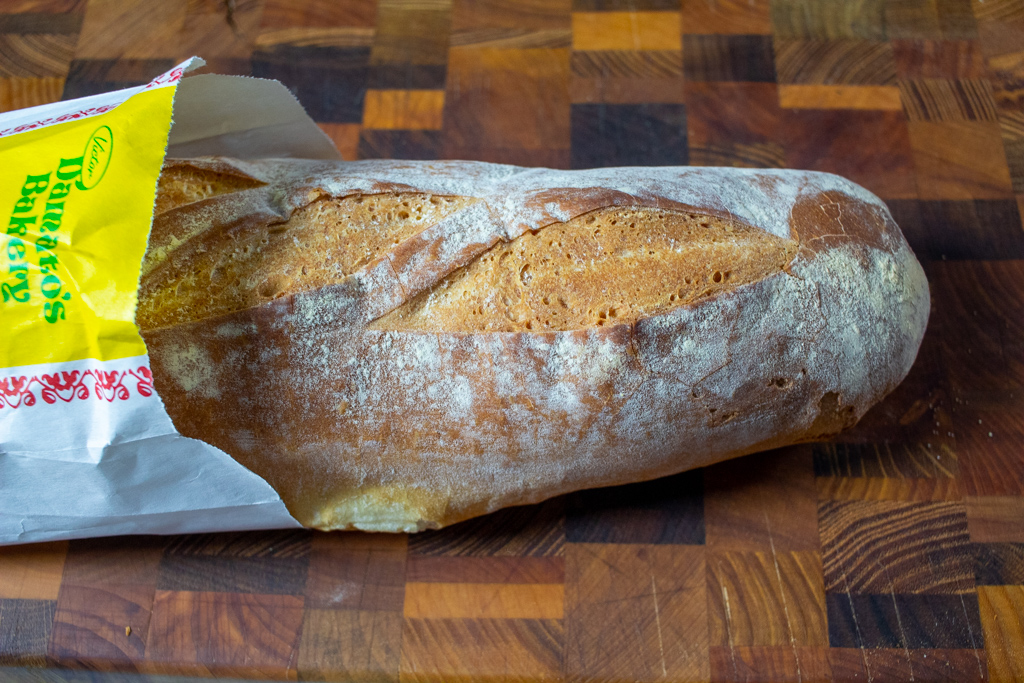
while bruschette are made from a more full-sized slice of bread like a rustic Italian sourdough
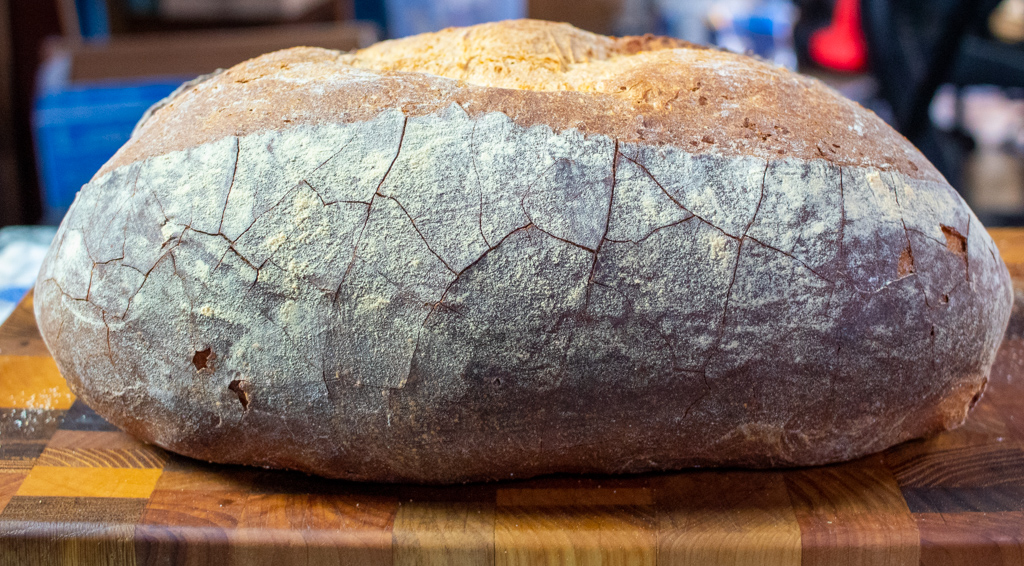
but few of the Italian recipes I’ve read, whether for bruschett, crostini, or crostoni, specify the type of bread to use, nor even the method of toasting. They simply assume that the bread has been toasted, and that at some point it has had garlic, olive oil, and salt applied to it.
And of course, one of the more common toppings for a bruschetta, here or in Italy, is tomato. In the US we might dice the tomato, salt it, and toss it with chiffonaded basil and perhaps a little balsamic vinegar before serving it on the toast. In Italy as in Spain, they might simply smash a cut tomato onto the bread, expressing some of its pulp and juices.
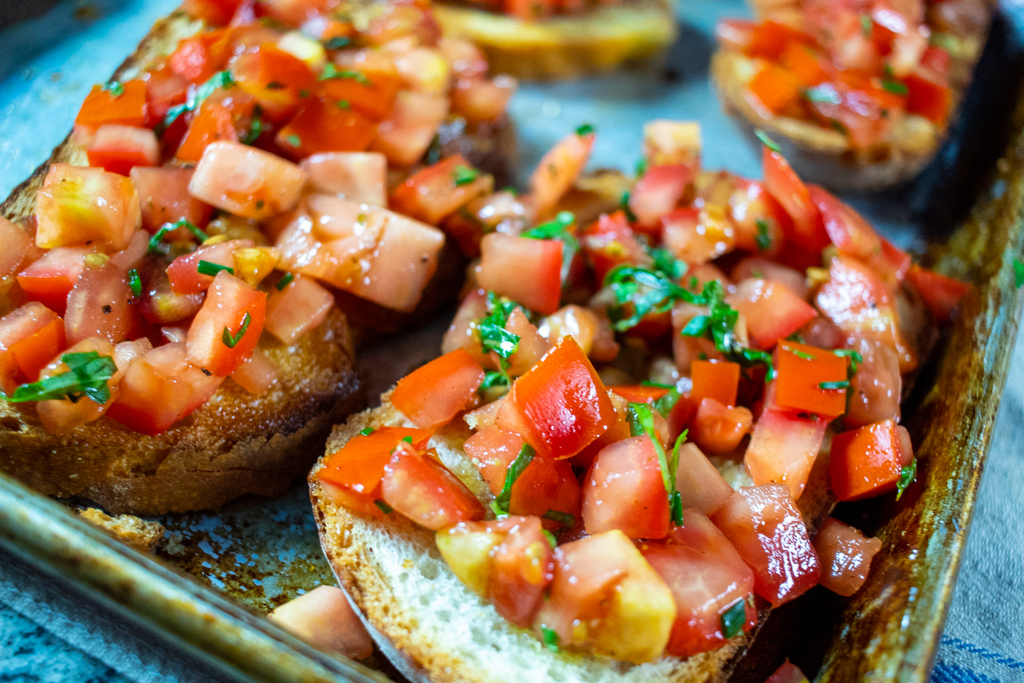
But of course Bruschetta is simply a type of toast-based antipasto or appetizer rather than a set recipe. Any number of toppings are possible–vegetables, whether raw or cooked or preserved; cured meats such as prosciutto, mortadella, coppa, and other products of the salumeria; cheeses or eggs; fish or fruits or specially-made spreads; or combinations of the above. In my first attempt I tried the standard American tomato-basil bruschetta along with a combination of mortadella and roasted red peppers
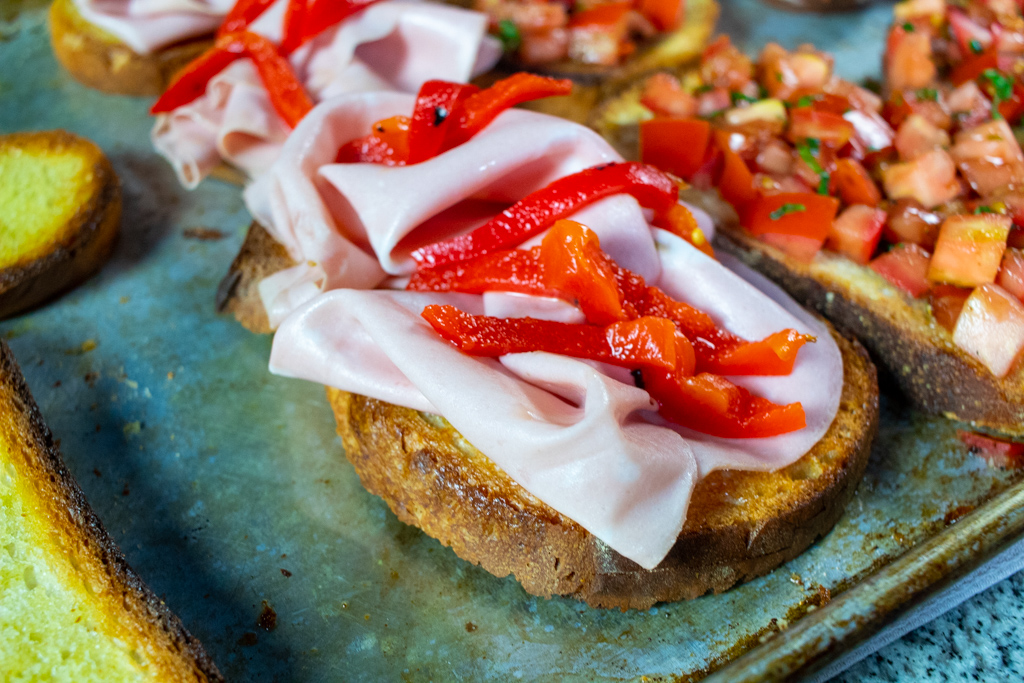
As well as melted gorgonzola cheese drizzled with honey.
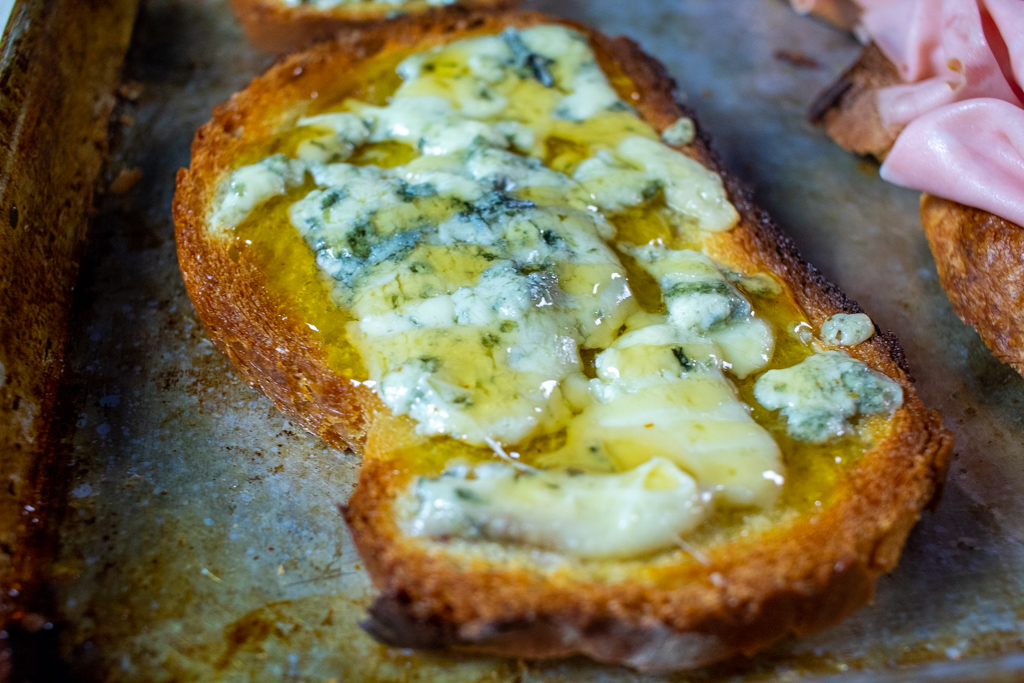
The tomato and basil combination is a classic for a reason, and there are very few social gatherings at which you could put out this common bruschetta and not have them set upon immediately by guests, the sweetness of the basil and the fruitiness of the olive oil bringing out the sweeter character of a plum tomato the way they do. Mortadella and roasted peppers was an idea I had that worked but mostly because the mortadella I bought was simply very good. I’d like to try mortadella bruschetta with a pistachio pesto instead sometime. But my favorite of these was the gorgonzola with the honey, the sharp and salty cheese complemented by with the sweet and aromatic honey more harmoniously than you might imagine.
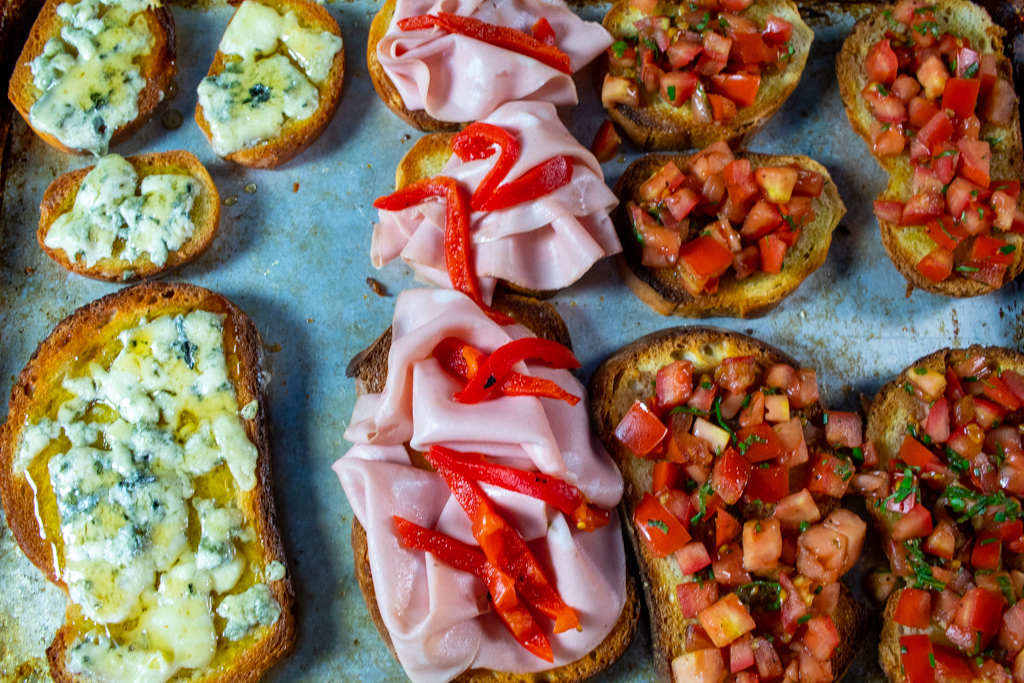
In a second round, I tried some additional combinations: prosciutto and caprese salad, with fresh mozzarella, tomato, and basil leaves
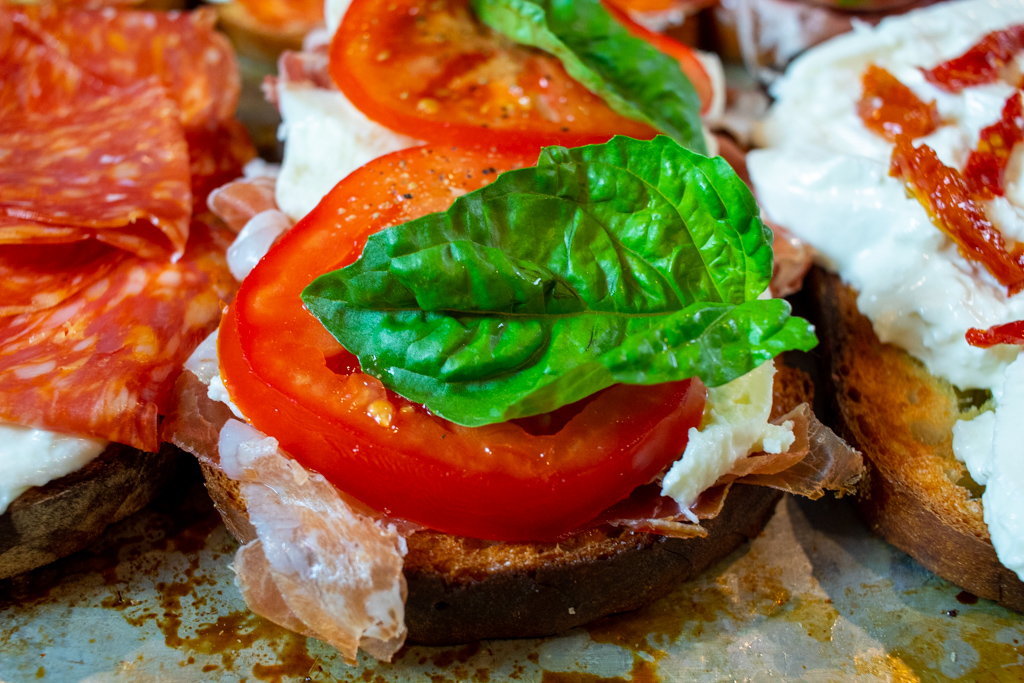
Hot soppressata with ricotta cheese
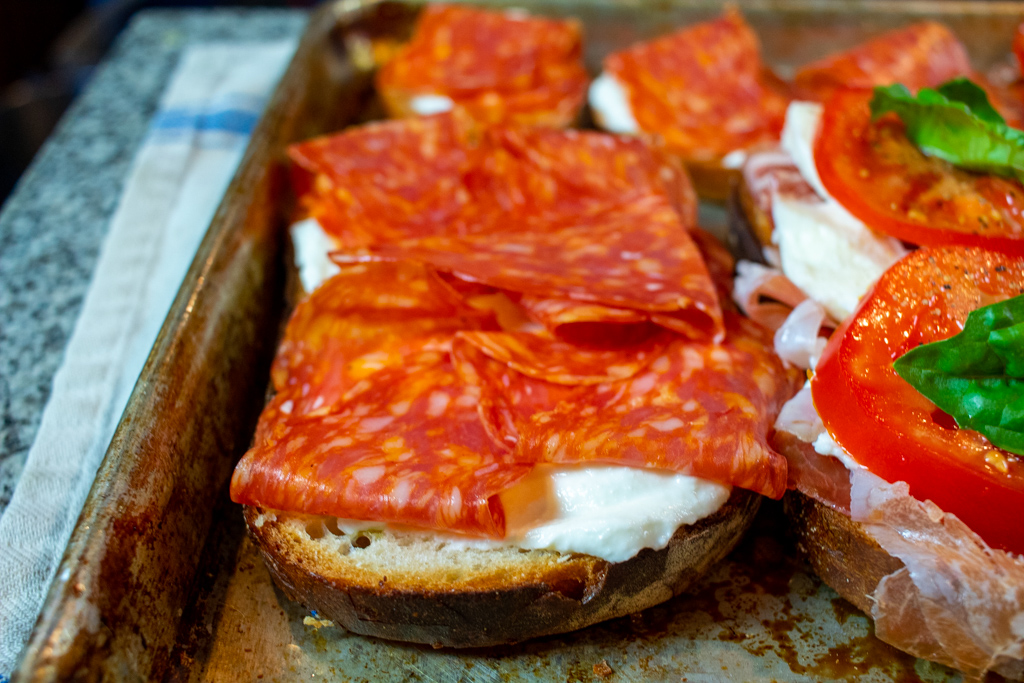
and burrata with sun-dried tomatoes
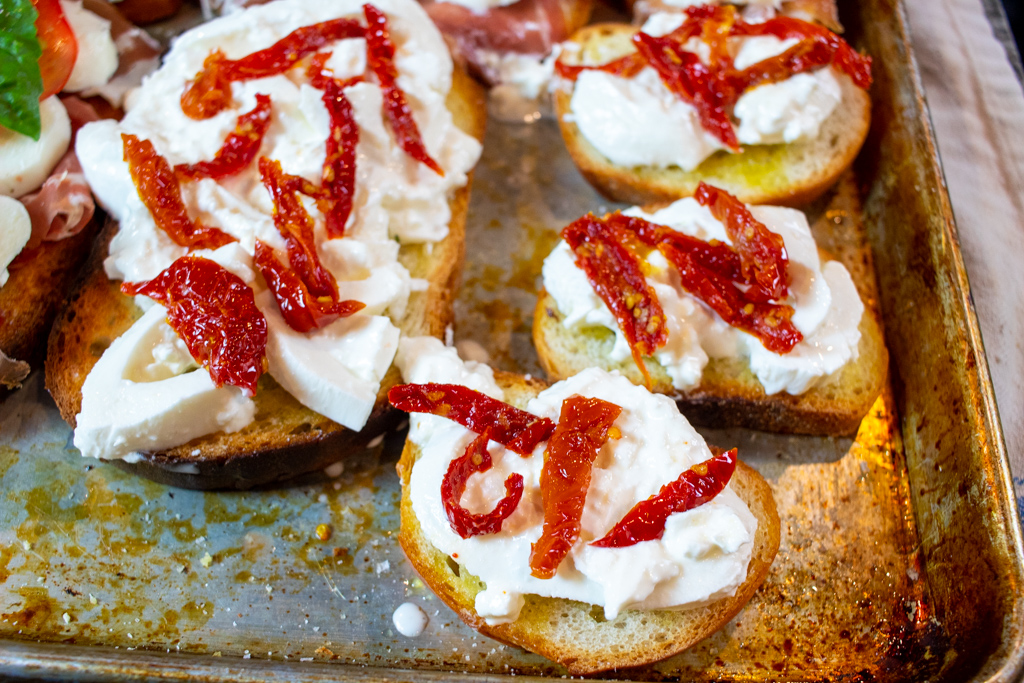
I am a sucker for burrata cheese, and it probably didn’t need the sundried tomatoes, but that big hit of concentrated salty/savory, sweet and sour flavor from the strips of dried tomato added dimantion to the creaminess and alternating textures of the burrata. Prosciutto with tomato, basil, and fresh mozzarella is one of my favorite combinations in a sub sandwich and it’s as effective or more on a bruschetta, with the slight sharpness of garlic and the crunch of the toast enhancing the salty/creamy/sweet flavors of prosciutto and mozzarella, tomato, and basil. And the soppressata / ricotta combination takes that same salty/creamy combination and trades the sweetness of tomato and basil for the subtle fire of the Calabrian chilies used to flavor the salami.
I also tried some jarred bruschetta spreads available at my favorite local Italian deli, Frangella Market. These were all decent, though none of them terrific standalone sandwich toppings. I can certainly see using them in sandwiches along with other ingredients. The olive spread had the fruity and bitter saltiness of a kalamata olive in a fine puree; the sun-dried tomato spread milder and softer than the whole sun-dried tomatoes both in flavor and texture; and the sweet pepper bruschetta topping featuring whole chunks of red, orange, and yellow peppers in a syrupy liquid, much softer and sweeter than the roasted red peppers I used with the mortadella previously.
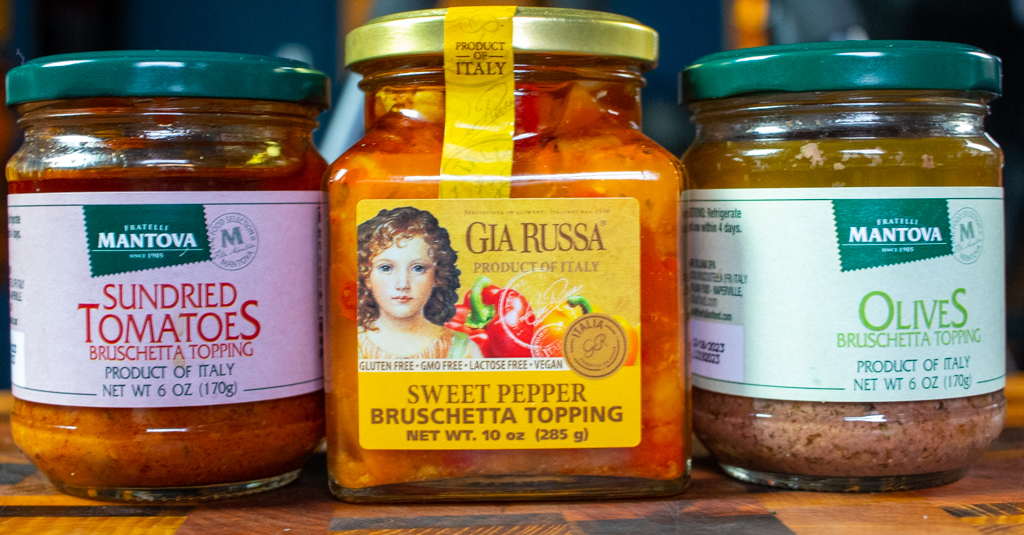
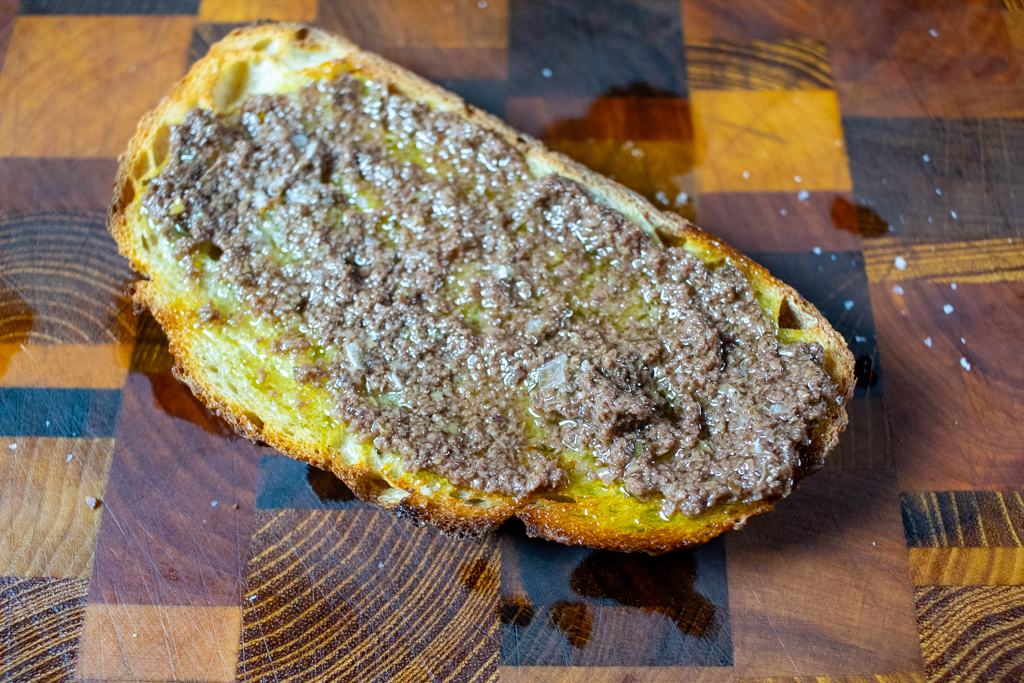
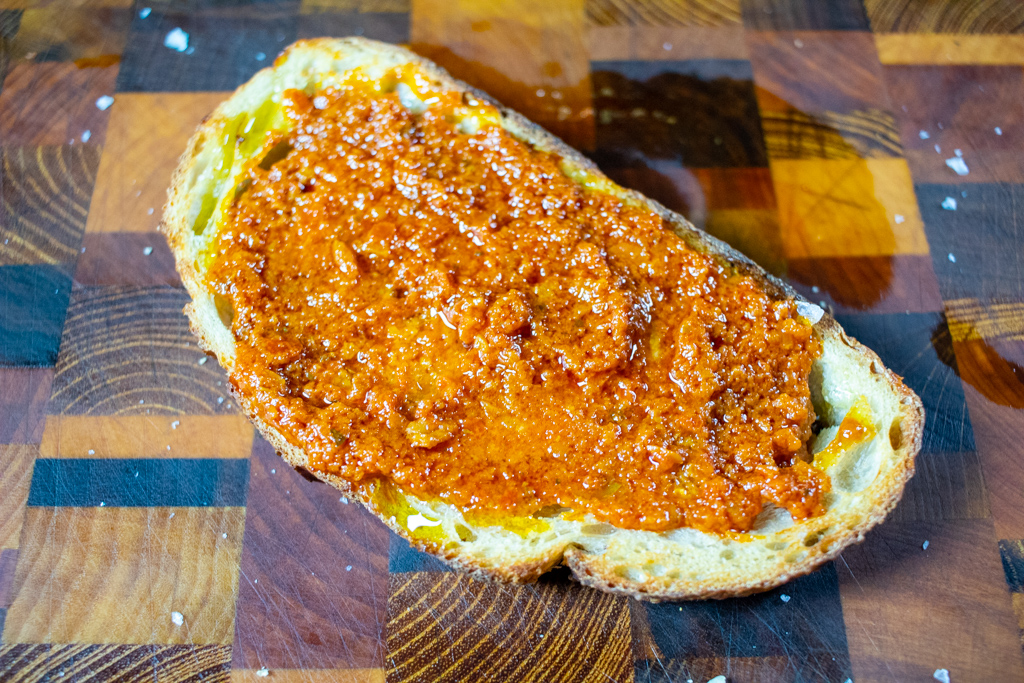
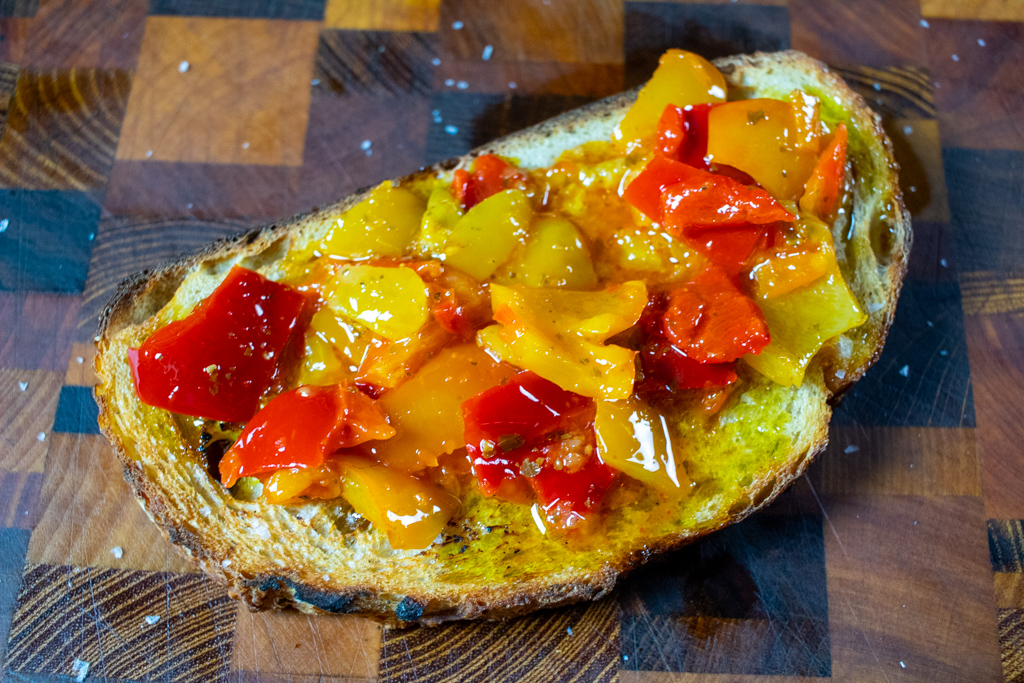
But my biggest education in bruschetta this month came from these two books. There are dozens, maybe hundreds of cookbooks dedicated to Bruschetta. Picking the ones I wanted to read was a challenge. Even after weeding out titles with words and phrases in them like “100 Best” or “Yummy” there were many left over. So I went with the most basic of criteria–I chose the two whose authors had Italian sounding last names.

Each of these books is full of recipes sourced from Italian people and written from an Italian perspective. Some of them are quite simple, while others require a level of effort beyond what many might think of spreading on toast. I chose a few from each of the two books that intrigued me and reproduced them. Each of these was outstanding.
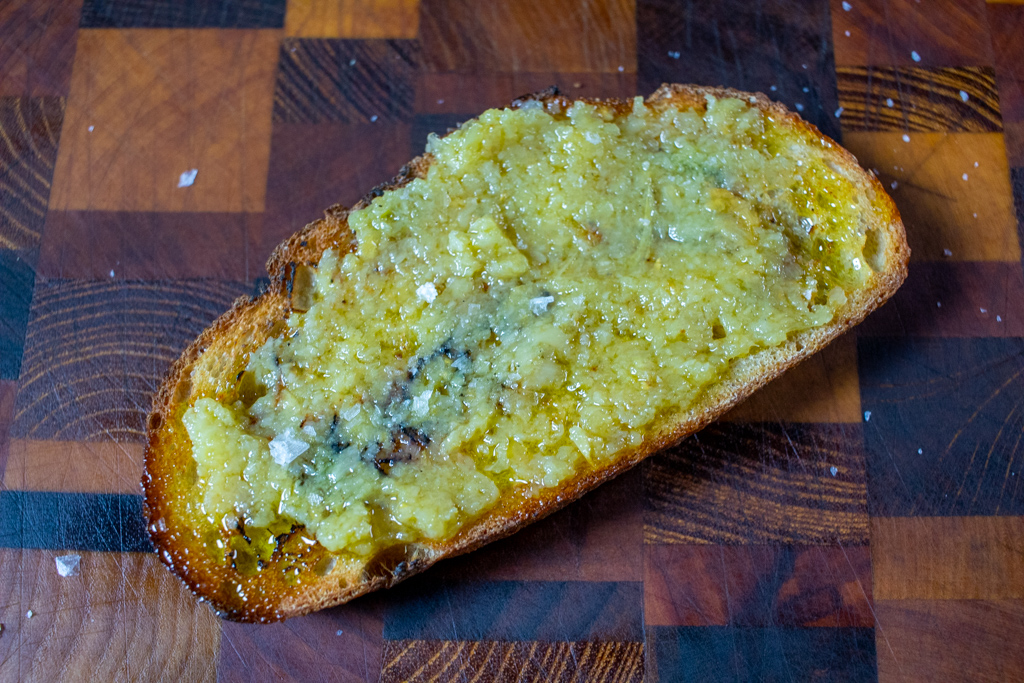
Garlic, gently fried in olive oil until soft then mashed to a paste, spread over bread. Intense, somewhere between the sharpness of raw garlic and the sweetness of a slow-roasted garlic, with a sprinkling of flaky Maldon salt this was simple yet gorgeous.
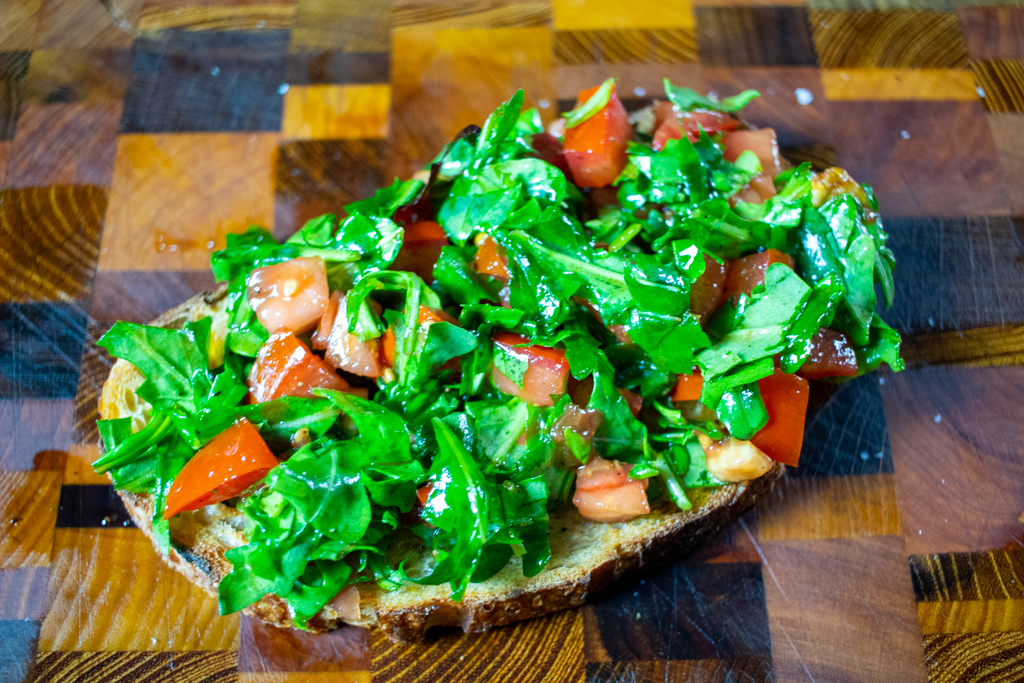
Maybe the prettiest of the bruschetta I made. Peppery arugula and sweet/savory plum tomatoes, seasoned with salt and pepper and tossed with some of the excess olive oil from frying the garlic. The juices from the tomatoes and the aromatic garlic oil made any additional dressing unnecessary.
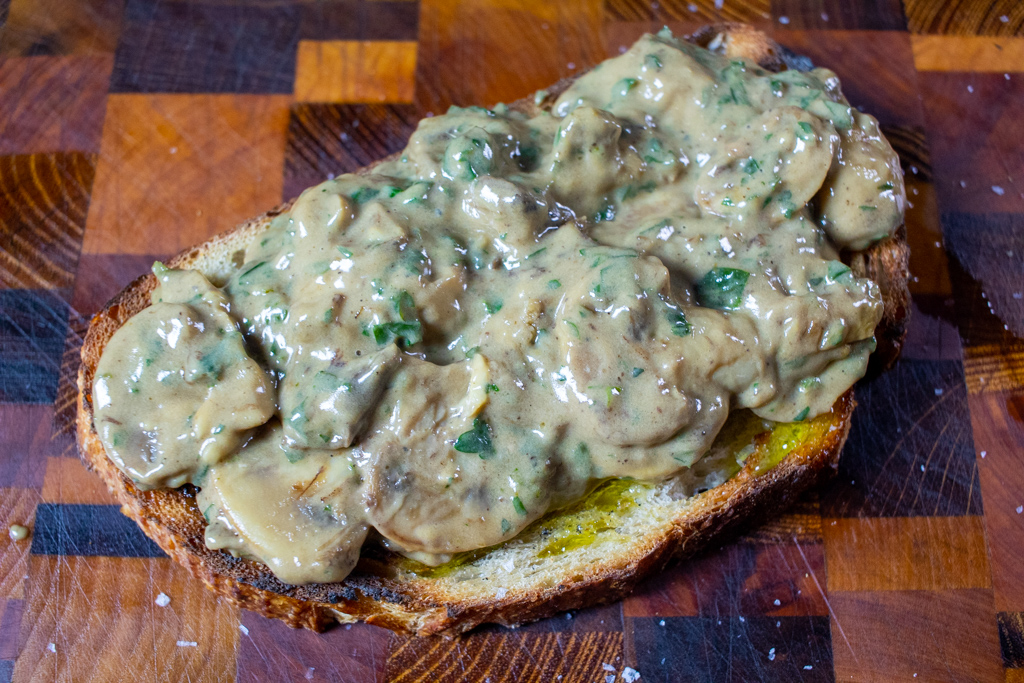
This combined button mushrooms and rehydrated porcinis in a bechamel flavored with Parmesan cheese and parsley. Both porcinis and Parmesan are richly savory, making this an intensely satisfying bite.
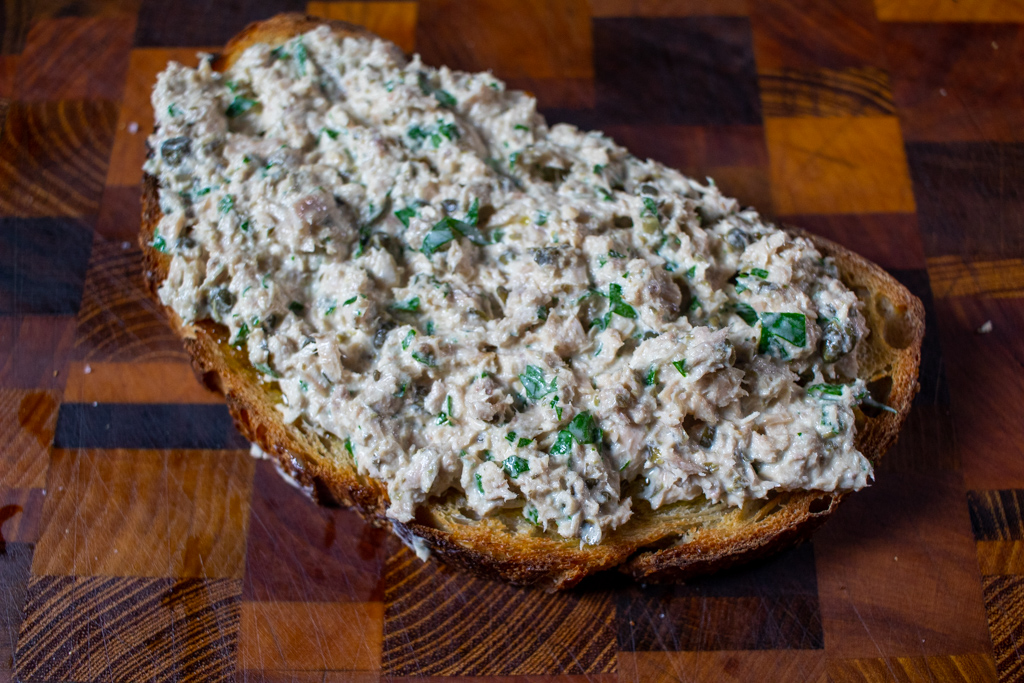
This was, essentially, a brightly lemony tuna salad given a salty boost with a bit of anchovy mashed into the dressing and some chopped capers. Those zesty touches and the quality of both the tuna and the bread, elevated this toast beyond simple tuna salad.
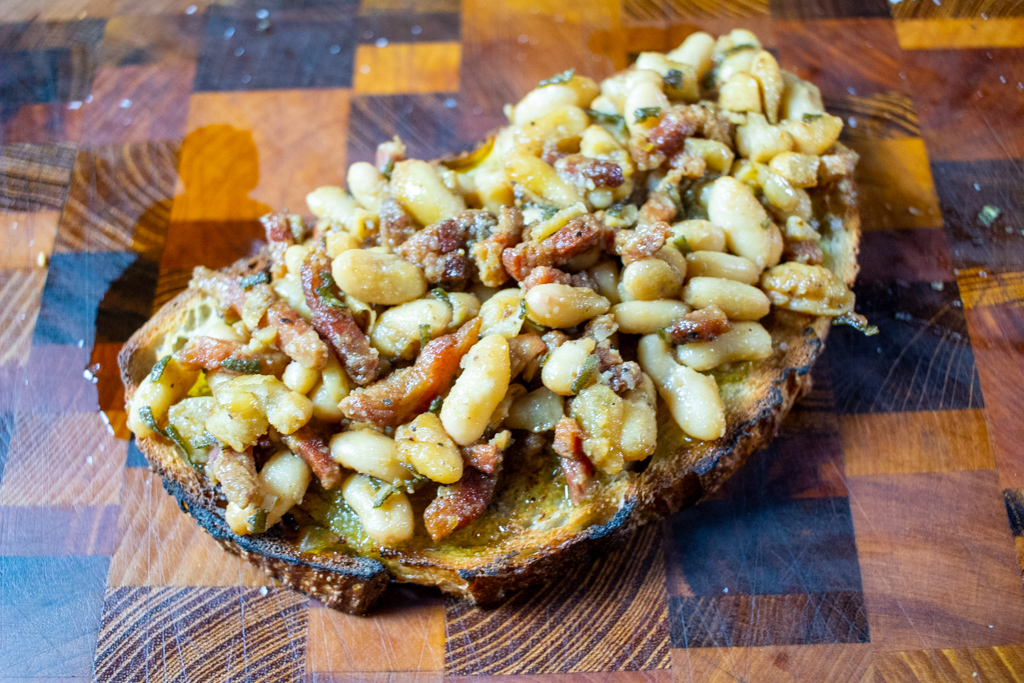
Still, my favorite was this combination of cannellini beans with crisp pancetta, cooked in an olive oil infused with garlic and fresh sage. The crispness of the pancetta contrasting with the softness of the beans, the aromatic garlic and the peppery sage, it is a simple combination but it is the first time I have ever felt this strongly about what is, essentially, beans on toast.
The cannellini, the tuna, the mushrooms, all of them may seem to merely be shades of beige on slightly charred bread, and admittedly they are less picturesque than the bright reds and greens of the typical bruschetta. And given the tomato-basil bruschetta’s favorable ratio between ease of preparation and deliciousness, it’s easy to see why it has become the default. Still, there are a number of other recipes in this book that have piqued my curiosity, and if there’s one thing I don’t mind it’s eating good stuff on toast.

I like sandwiches.
I like a lot of other things too but sandwiches are pretty great










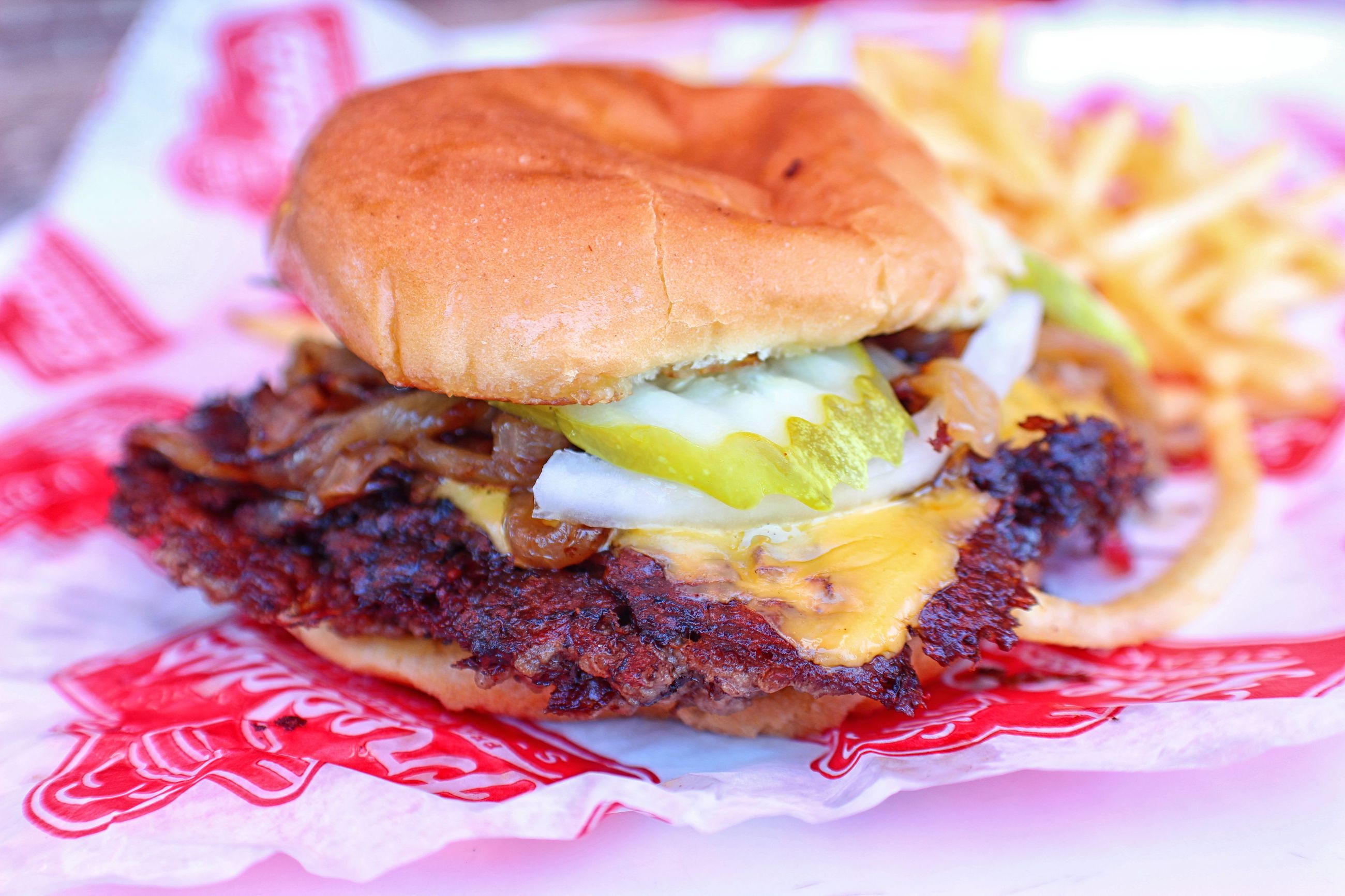
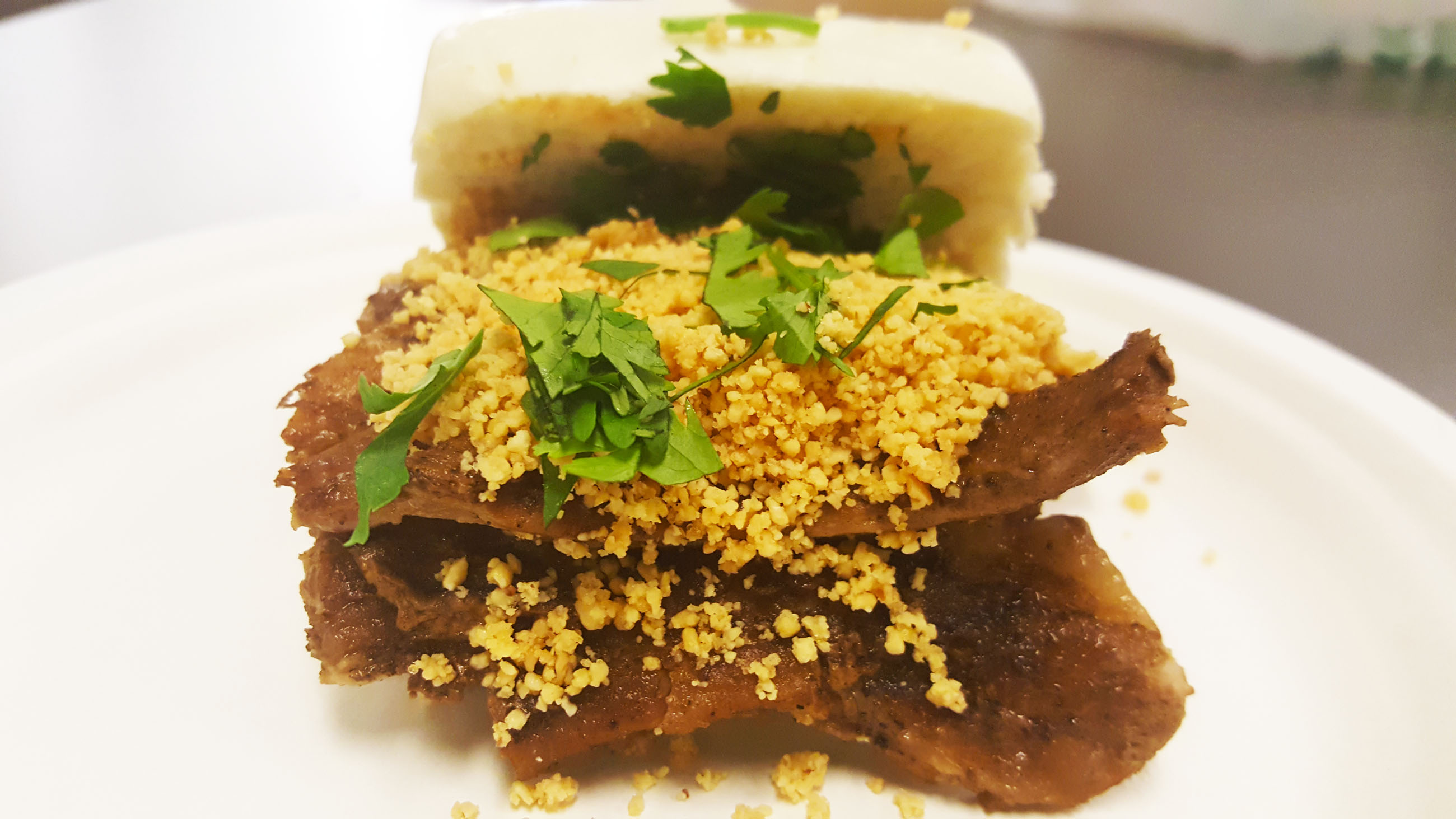






Recent Comments